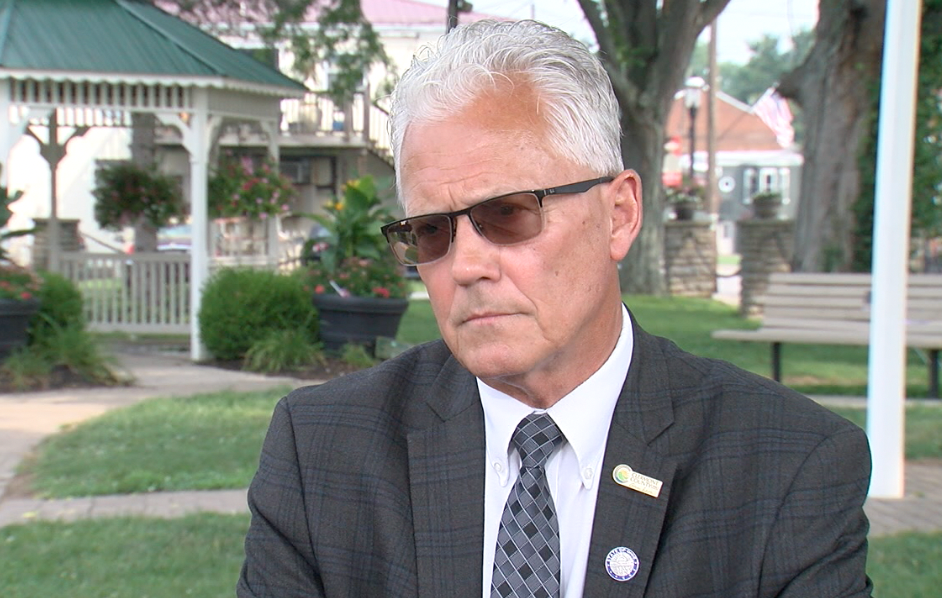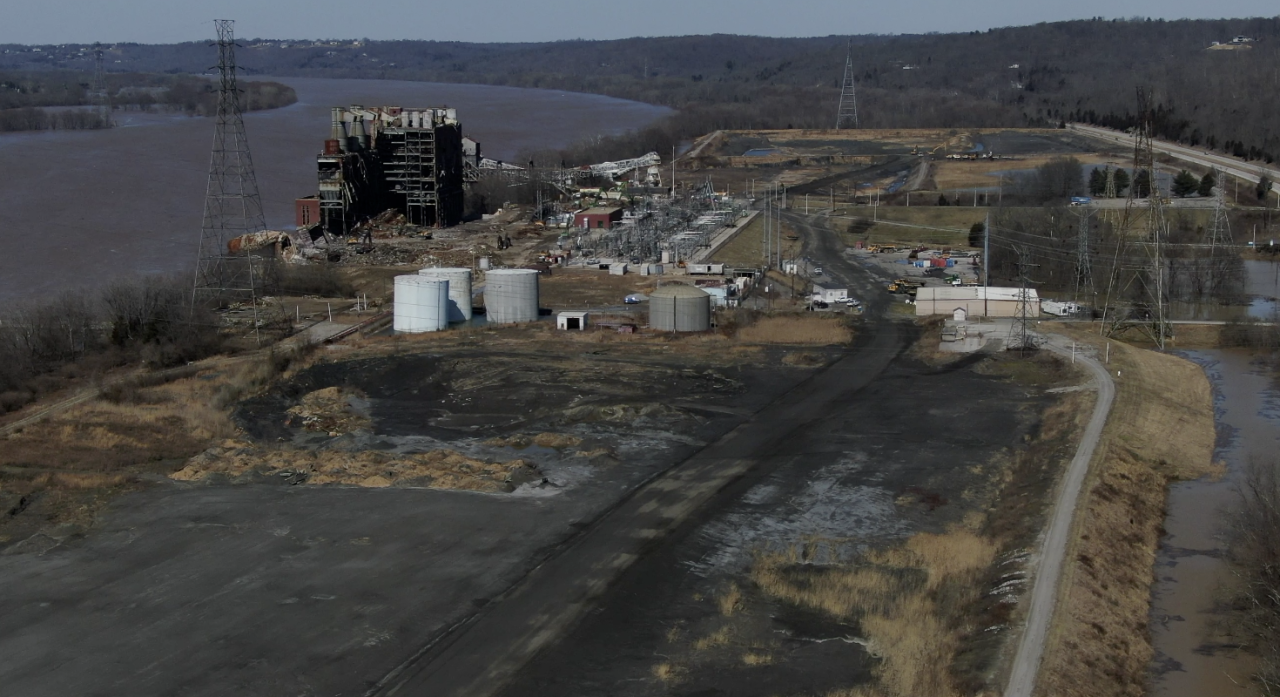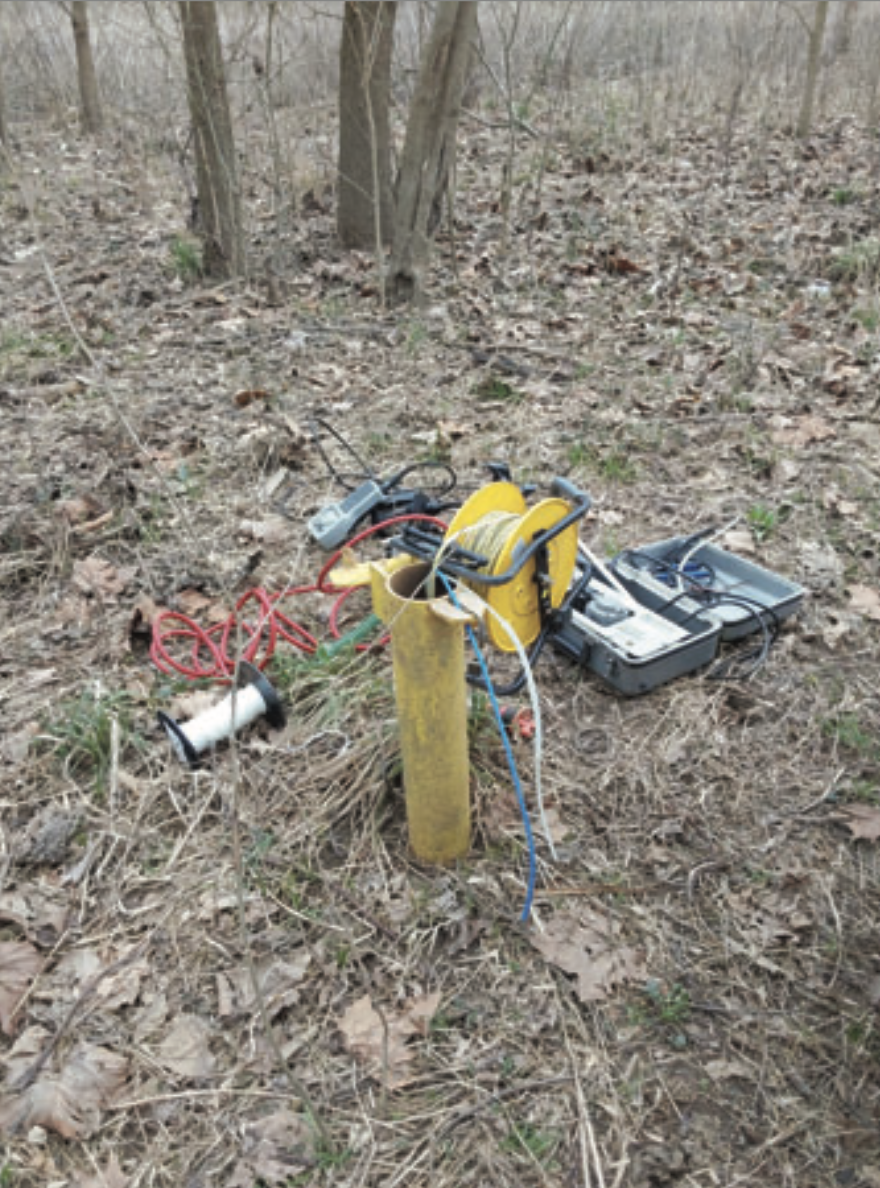PIERCE TOWNSHIP, Ohio — Clermont County officials are worried about public drinking water after the Ohio EPA approved an experimental project at the former Walter C. Beckjord coal plant site to allow the injection of new chemicals into the groundwater.
The Ohio EPA approved the pilot plan on May 26 — one day after Beckjord owner Commercial Liability Partners and its subsidiary New Richmond Development Corp. submitted it.
“The people here in Clermont County need to understand when someone is going to come in and inject chemicals into groundwater upfield from where their drinking water is actually extracted from the ground,” said Clermont County Commissioner David Painter.
The Ohio EPA did not notify county officials before approving the plan, and Painter said they only learned of it when WCPO contacted them.
“Obviously state-level offices are subject to influence by large businesses and especially utility generating facilities,” Painter said. “I would say their performance is not stellar.”

An Ohio EPA spokesperson said the agency is required to approve injection well projects if they meet state administrative code requirements, which this one did.
“The proposed plan meets health standards for drinking water,” said Ohio EPA spokesperson Dina Pierce. “Protecting drinking water sources is a high priority … and is a focus of our review process for injection wells around the state.”
Six million cubic yards of leftover coal fly ash at Beckjord are stored in man-made ponds along the Ohio River, which is a drinking water source for more than 5 million people.
These unlined ash ponds are in the river’s floodplain and directly upstream from Clermont County’s primary drinking water well fields, which serve 130,000 people.
As a result of the toxic coal ash, a plume of sulfate contamination is migrating underground. Altman said the Ohio EPA has testified in a recent court case that it does not know the source of the sulfate plume.
Four times a year, CLP tests the groundwater using a network of monitoring wells to track the spread of sulfate. It reports the results to the county and the Ohio EPA.

As an experiment, CLP plans to inject sodium lactate and sodium acetate into the groundwater through a new well weekly for 18 weeks. It hopes the chemicals will reduce the sulfate plume and convert it to hydrogen sulfide, according to Ohio EPA records.
But county officials worry that chemicals will be injected directly up gradient from the public water supply.
“Is having the groundwater contaminated with hydrogen sulfide any better than sulfate,” Clermont Utilities Director Lyle Bloom wrote in a July 13 letter to the Ohio EPA. “This proposal also acknowledges that concentrations of soluble metals may occur. Will this really be a benefit to water quality?”
After Clermont County officials complained, Painter said the Ohio EPA delayed the project’s start date until after the county can meet with the agency and CLP to resolve its concerns.
No one from CLP responded to a request for comment.
“Why was the public and even Clermont County excluded from knowing about this? Why did it take a media inquiry to uncover this,” asked environmental attorney Dave Altman. “Why was this not told to the people who have to live with the environmental issues?”
Once the new injection project begins, CLP will continue to operate monitoring and extraction wells to prevent sulfates from migrating into the county’s public well field, Pierce said.
“The company is required to submit operating reports to Ohio EPA every month that injection occurs. These reports must include a description of the injected fluids, volumes injected, rate of injection … and any monitoring results,” Pierce said.

The Ohio EPA, CLP, and county officials are set to meet on July 26 for their regular quarterly meeting. The county asked to add the injection plan to the agenda, but the Ohio EPA is proposing a second meeting, which has not been scheduled yet, to discuss that proposal.
“I would love to see that as a public meeting and allow this process to be explained to the residents of Clermont County so that they can get their concerns answered and understand exactly what it is that they’re proposing,” Painter said.
But Pierce said only technical representatives from the county, the Ohio EPA, and CLP will attend those meetings.
"That's not the way government should be operating," Altman said. "Environmental laws are designed to protect people ... they're not designed to protect the innovative and experimental ideas that have to be kept secret from the public."

The W.C. Beckjord Station, a closed Duke Energy power plant located 20 miles east of Cincinnati, contains more than 10 billion pounds of toxins that are packed into ponds along the banks of the Ohio River.
A coal-burning giant
Built in the 1950s as a coal-burning giant, the Beckjord plant pumped electricity to hundreds of thousands of homes and businesses across Southwest Ohio.
Duke Energy closed Beckjord in 2014 and sold the 1,400-acre site to CLP four years later. CLP is demolishing the plant, remediating the site and hoping to attract new development.
But the cleanup has not always gone smoothly.
Altman sued CLP in 2019 and again in 2022 on behalf of 100 residents. He says the developer breached a 1986 agreement with then Beckjord owner Cincinnati Gas and Electric that allegedly entitles residents to more information about contaminated waste disposal. And that no agency is actively regulating coal ash at the Beckjord site.
Those lawsuits are stalled in U.S. District Court in Cincinnati, awaiting rulings on several pending motions from Judge Michael Barrett.
Coal ash exposure causes higher risk of cancer in the skin, liver, bladder and lungs, as well as neurological and psychiatric effects, cardiovascular impacts, damage to blood vessels and anemia. It also threatens plant and animal wildlife, causing elevated selenium levels in migratory birds, wetland vegetative damage, fish kills, fish and amphibian deformities, and plant toxicity, according to one lawsuit.
Over the years, Clermont leaders have frequently complained about the lack of information from CLP and mediocre oversight from the Ohio EPA.
Residents complained about brown dust clouds blowing from the ash ponds in the summer of 2020 to the Ohio EPA and Southwest Ohio Air Quality Agency, so thick that drivers couldn’t see the road or traffic lights.

Contractors blew up the main Beckjord smokestack in February 2021 as part of the demolition. Instead of falling on land as was permitted, it toppled into the Ohio River. The U.S. Army Corps of Engineers ordered CLP to clean up the mess and remove an estimated 75 cubic yards of demolition waste from the river, which the company did several months later.
Two wells that monitor groundwater for contamination at Beckjord were either missing or damaged for several months in 2022. But Clermont County officials never knew about it, until WCPO notified them.
“The last couple of years show that there is a huge concern and a huge question about the ability of small entities to like New Richmond Development Corporation to really manage a large-scale remediation project,” Painter said. “We have to do everything that we can right now to ensure that we don’t have a legacy contamination site here 30 years from now.”
Now Painter is worried about the latest plan to inject chemicals into the groundwater at Beckjord — "We want to make sure that there’s no concern with the drinking water before the process is actually initiated."
"This, by the way, is an experiment. It's a pilot project in the real world near actual water levels," Altman said. "Are you going to make things worse?"

Better regulation at legacy sites
Painter is set to introduce a resolution to increase safety in the management of coal combustion residuals at a National Association of Counties meeting next week.
The resolution urges the U.S. EPA to mandate that all CCR waste be managed in a way that prevents the migration of contaminants and the risk of catastrophic release. It also urges the federal government to provide technical and financial help to local governments to protect groundwater and waterways.
County leaders worry that coal ash from Beckjord is leaking into the groundwater and the Ohio River. They want the ash removed from the man-made pits and taken to a sanitary-lined landfill.
But that’s not what CLP is doing. It is relocating coal ash from the oldest pond on the site – Pond A – to another unlined pond on the south side of the property, Pond C.

The W.C. Beckjord Station, a closed Duke Energy power plant located 20 miles east of Cincinnati, contains more than 10 billion pounds of toxins that are packed into ponds along the banks of the Ohio River.
For years environmentalists and local officials complained about the toxic coal ash at Beckjord. But the U.S. EPA had little regulatory ability. These old coal sites were exempt from current rules because they closed before the agency enacted rules overseeing them in 2015.
They existed in a grandfathered-in no man’s land.
Now the U.S. EPA is considering new safety and health requirements for these legacy sites, including Beckjord and several other retired coal plants in the Tri-State area.
Clermont County’s environmental attorney, Scott Doran, wrote a July 14 letter to the U.S. EPA urging more oversight of older coal plant sites, and an assurance that limited liability companies buying them will be required to close them properly and remove the coal waste from unlined pits on site.

“Ongoing monitoring has demonstrated that the impoundments continue to contribute large quantities of contaminants to the ground water and the Ohio River … As long as the coal ash is in the ground, without containment, leaching of contaminants will continue,” Doran wrote.
This is especially concerning because CLP sold a large portion of the Beckjord site to a local developer earlier this year, “with no understand of closure requirements or costs.”
“The public should not be forced to step in to pay for years of improper coal ash management,” Doran wrote. “Clermont County and its water customers would incur capital costs of over $30 million and annual operating costs of at least $700,000 per year if the Beckjord ash impoundments are not properly closed and insufficient funds remain to maintain and operate the interceptor wells and monitor well network for over 30 years.”
Ohio EPA Letter by WCPO 9 News on Scribd






